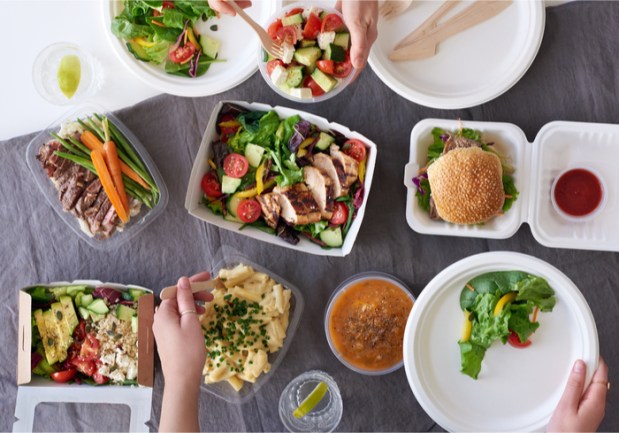Can Social Media Make Ordering Takeout Less Frustrating?

Food ordering and delivery have come a long way since reliance on the Yellow Pages and those paper menus stuck into door frames — no one needs to be told that. But a fledgling digital service aims to take that ordering experience one step further, by going where hungry consumers are more likely to be hanging out instead of asking them navigate to an online restaurant marketplace.
Say2eat enables consumers to order food from select restaurants via such channels as Facebook Messenger, iMessage, Amazon Echo and Google Home, according to Li-ran Navon, CEO and co-founder of the fledgling firm. During a recent interview with PYMNTS, he discussed why he thinks Say2eat can make an impact in a crowded field, what it does differently from the likes of GrubHub, and why the company’s early clients are experiencing positive returns from the service.
Waiting for Takeout
To understand what Say2eat is after, it helps to understand its origins in an experience to which most people can relate. This may seem odd, perhaps even a bit decadent, but it’s true: few things in modern consumerist society can cause the frustration of calling your favorite takeout joint only to wait on hold for five long minutes as your stomach growls. Biochemistry is making its non-negotiable demands, and every second can feel like an eternity.
It was during one such instance that the idea for Say2eat started to bloom inside Navon’s mind, he said. But instead of building a platform that would draw in consumers, the company would go to where people were, and provide technology that would enable them to directly order, and pay, for food from restaurants. Say2eat would act as a silent middleman, its technology enabling the connection between the food providers and their customers.
Say2eat would also stand apart from the pack by positioning itself as more selective than other food delivery options. “We are a white label service,” Navon said. “We are not a marketplace for restaurants. We enable restaurants to receive orders from multiple channels without downloading an app.”
Tech Integration
How does it work? A participating restaurant integrates the Say2eat technology into its POS and online ordering system. The technology enables ordering via those various channels, most notably with Facebook Messenger chatbots. That makes sense, as Messenger, according to estimates, has some 1.3 billion monthly users, a figure that keeps growing steadily.
“People are used to messaging all day long,” he said. The chatbot technology enables “real-time” communication with restaurants, which, he said, removes friction from the food-ordering experience.
Using Messenger, for instance, the consumer is able to review menus from participating restaurants, and easily access those eateries that have become favorites. One-click and one-click reorder tools serve to encourage easily ordering and purchases. The orders go to the restaurants. Consumers provide payment information, and can store it, Navon said. Orders can be for delivery or take-out.
Say2eat stays out of any customer complaints about wrong orders or late deliveries. “In those cases, we utilize a one-click connection between the restaurants and their customers,” Navon said.
Average Order Values
The company collects its revenue from the restaurants, which have the option of paying commission or flat fees to use to the service. “Most pay the flat fee,” he said, declining to offer more details about those fees, or how many restaurants use the service.
So far, the feedback from restaurants has indicated that enabling consumers to order food without going to an eatery’s website or an online marketplace has led to higher revenue. He said a Chicago pizza chain that he would not name has reported “higher average order values” since integrating Say2eat, which Navon attributes to an easier ordering experience.
Another lesson? Pictures of food help drive sales, he said. “Pictures have good value,” he said. “They encourage higher spending.”
So what’s next? Navon said the focus for the next year is mainly just growing the customer base and getting the word out, and being able to offer more use cases to gain more restaurant clients. Right now, English is the only language supported by the company’s technology, but Navon said Say2eat is working on a Spanish option.
The food delivery market offers so many choices that consumers might fairly feel overwhelmed, but if such technology takes off and commands a lucrative niche — or more — fewer consumers might have reason to curse existence while waiting on hold for takeout or delivery.
